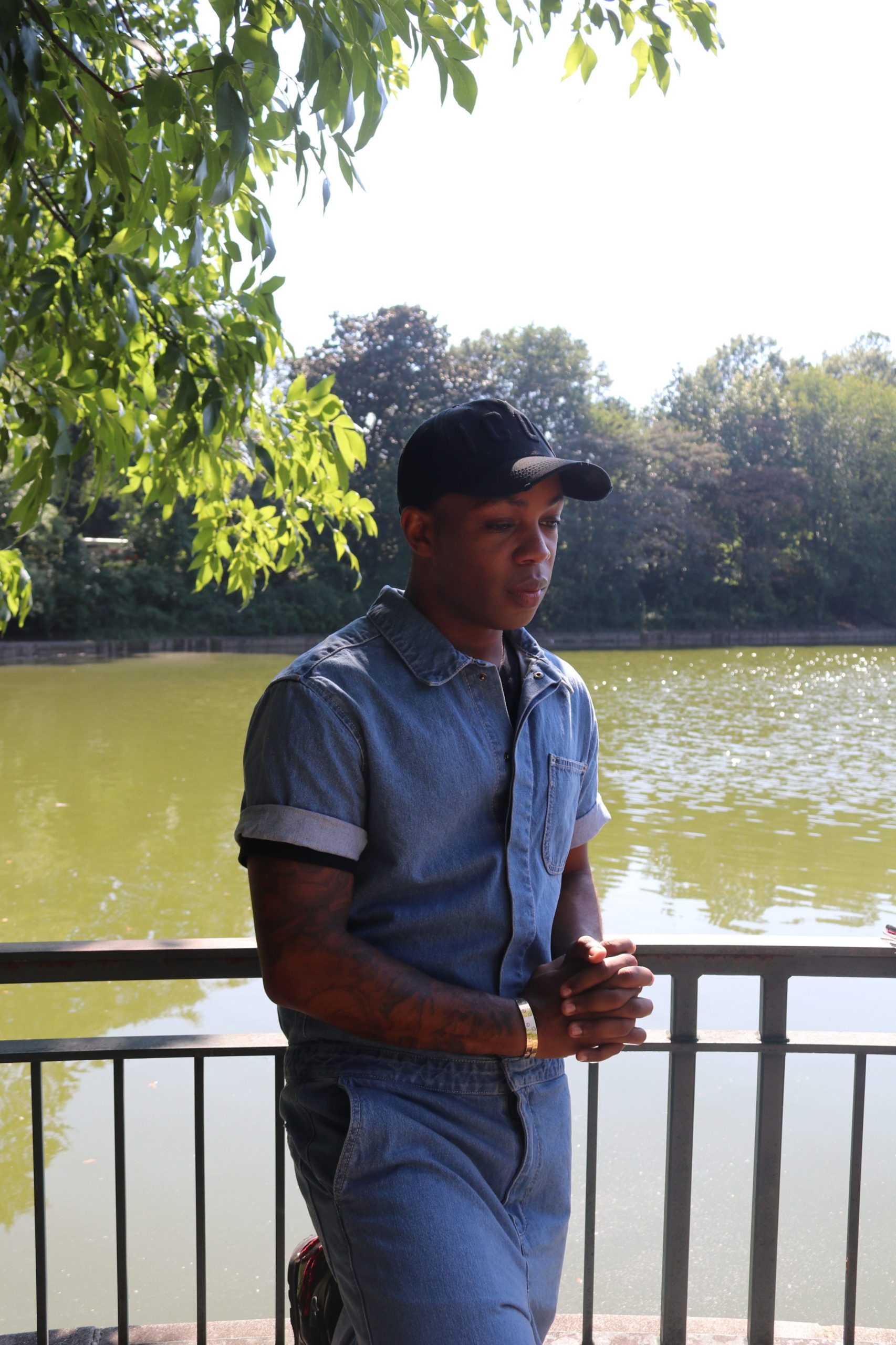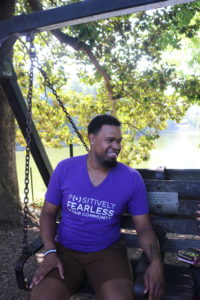
HIV and AIDS are a rising concern in the U.S., but the majority of those affected are in Georgia – more specifically, in Atlanta. The statistical demographics are telling a particular narrative, one that shows that bisexual African American men who are having sex with other men (MSM) are the ones most likely to contract HIV.
The epidemic
Center for Disease Control (CDC) spokeswoman Donnica Smalls said that while other demographics have been steadily decreasing, HIV rates in gay and bisexual men have not been showing the same trend.
“Gay and bisexual men were the only group that did not experience an overall decline in annual HIV infections from 2008 to 2014. Annual infections remained stable at about 26,000 per year. Infections were also stable among black gay and bisexual men, at about 10,000 per year,” Smalls said.
Although the infection rate for MSM has not decreased throughout the past years, it also has not increased, and according to Smalls, that’s a good sign.
“After more than a decade of increases, stabilization of incidence among gay and bisexual men is an encouraging sign, especially in the face of rising HIV prevalence which creates more opportunities for infection.”
The issue does not seem to lie in having sexual intercourse with the same gender, because according to Smalls, it is just rare to see cases of female-to-female transmission of HIV.
“Case reports of female-to-female transmission of HIV are rare. The well-documented risk of female-to-male transmission shows that vaginal fluids and menstrual blood may contain the virus and that exposure to these fluids through mucous membranes (in the vagina or mouth) could potentially lead to HIV infection,” Smalls said.
In fact, the cases that have been reported are often linked back to heterosexual sex or the use of dirty needles to inject drugs.
“Case reports of suspected female-to-female transmission typically indicate that the majority of infections among women who have sex with women (WSW) likely come from behaviors with a higher risk of HIV transmission like injection drug use or heterosexual sex,” Smalls said
Currently, the CDC is implementing a High Impact Prevention program which targets high risk regions and implements preventative measures, such as increased funding for state and local health departments.
“High Impact Prevention focuses on delivering the most effective interventions to the groups and regions with the greatest need, and we will continue investing in prevention and treatment for gay and bisexual men, especially men of color,” Smalls said.
Living HIV positive

Photo by: Vanessa Johnson| The Signal
But there’s more to the infection than statistics. Deondre Moore is a gay African American man that was diagnosed with HIV, and representative of Positively Fearless, an organization aimed at educating and helping to empower Black and Latinx (a gender-neutral term for those of Latin decent) gay and bisexual men to be “positively fearless” in taking charge of their health.
Moore was diagnosed when he was 19 years old and in his freshman year of college. Moore said the hardest part of finding out was having to tell his mom.
“I found out I was HIV positive and then I was immediately in a state of devastation and stress and I was really depressed,” Moore said. “ I told [my mom] what happened and that for me was in itself one of the hardest things I ever done because I had to go home to my mom and tell her ‘your baby is sick.’”
Immediately after sharing his test results with his mom Moore began treatment to keep his health the best it could be.
“The first thing she said was ‘now we have to hit the ground running.’ A couples weeks later I found a specialist and then I started taking my medication and it went from there,” Moore said.
Moore said that he shares his story to tell people about the journey he has gone through and how he deals with it.
“I wanted to use my voice to do something and to share what I have been going through. I gave my testimony to church and then it kind of took off from there,” Moore said. “People started calling me and asking me to give my story and my experiences, and my life kind of built up from there.”
According to Moore, there are a lot of misconceptions of the type of physical contact that you can engage in with someone who is HIV positive.
“There are some small misconceptions about HIV like you shouldn’t touch them, you can’t kiss, or you shouldn’t drink after them. None of that is true. You can’t get HIV from doing certain things like kissing and hugging or just shaking hands or eating off each other,” Moore said.
One of the biggest reasons that African American gays and bisexuals struggle with HIV and AIDS is because they don’t stay in treatment.
“I think one of the biggest things now is trying to get black gay men to get into care, but to stay in it as well. It’s one thing to get in it but to stay in it is really really important because statistics show the percentage of black gay men fall out of care for some reason,” Moore said.
He said that the reason for this might stem from stigmas, social determinants, and accessibility to a doctor. However, he stressed that staying in care is the most important thing to do. Moore also said having a support system could be the difference between life and death.
“That is probably the reason I am alive, is have a support group. A lot of people I think who may or have tested positive and they didn’t have that support system are the ones who didn’t make it or are not doing as good,” Moore said. “A support system doesn’t have to be your family. I have friends out there who are positive [and] their support system is just their friends.”
The Positivity Fearless campaign
Representative of Positively Fearless and supporter of HIV education in the LBGTQ community Todrick Hall spoke to The Signal about stigmas in HIV and why African American gay and bisexual men are the highest percentage to contract it.
What makes Positively Fearless different from other HIV awareness campaigns?
Hall: It makes them different, because there are different statistics. There are different cultural things that we as African American people face that sometimes other people don’t. I applaud Positively Fearless for realizing there’s an issue with our community specifically and diving in head first to try to get up and give us this information and give us tools that might be specific to us.
How do the stigmas on HIV affect the lives of those who are HIV positive?
Hall: I think that they completely make people feel that they can’t be open and honest. They make people scared to go to the doctor. They make people afraid to have a relationship with their doctor or to tell anybody about their status. It makes them afraid to date people because you have to be honest with them and tell them everything about their status. It just creates a scenario where people are so ashamed that they tend to hide inside and not address the situation and not get medication and put their lives at risk.
Why do you think black gay and bisexual men are among the highest percentage to have HIV?
Hall: I think that it’s a cultural thing for me. In black culture often times it’s just so strongly looked down upon and people feel that their masculinity is questioned if they’re gay or if they have anal sex. I feel that because we’re so harsh in our belief and our religion, that we feel that being gay is so horrible and people are forced to live these down-whirl lifestyles. People tend to do things in secret and not seek out the information and don’t equip themselves with the information they should know, because they are so ashamed that they’re having these thoughts and urges.
What would you say to someone who has contracted HIV?
Hall: Don’t freak out, it’s not a death sentence. You can live a long healthy, prosperous, loving life, all you need to do is go get tested, create a relationship with your doctor, stay healthy, take your medications, and stay on your medications. Only 37 percent of African American men who have been diagnosed with HIV are on medication, and also we as black LGBTQ community are twice as likely to miss a dosage of medication which is very dangerous.
The affect
- Southern states account for approximately 45% of all people in the U.S. living with an HIV diagnosis.
- In 2015, the South accounted for 52% (9,601) of the 18,303 new AIDS diagnoses in the United States.
- In the South, 55% of those infected are African American.
- 80% of people living with diagnosed HIV in 2015 were men, and 20% were women
- In 2014, gay and bisexual men accounted for 83% (29,418) of the estimated new HIV diagnoses among all males aged 13 and older
- Gay and bisexual men accounted for an estimated 54% (11,277) of people diagnosed with AIDS. Of those men, 39% were African American, 32% were white, and 24% were Hispanic/Latino.
- Young, black MSM (aged 13 – 24 years) – the most severely affected subpopulation of MSM – accounted for more new diagnoses in the United States (3,888 in 2015) than any other subgroup by race/ethnicity, age and sex.
According to the CDC
